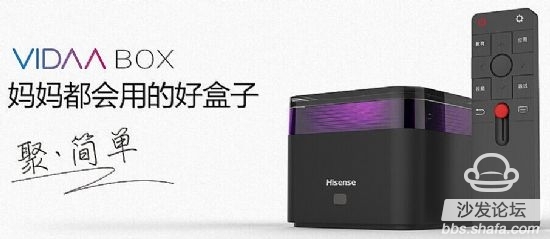
Another color TV player, Xiaomi said he has 5.6 million platform client resources. Although sales of millet TVs were limited during 2013-2014, the explosive box products won more than 5 million customers. Compared with color TVs, smart boxes also have the data advantage of higher average operating rate and 100% product activation rate. According to the growth rate of Xiaomi’s color TV platform market, by the end of 2015, Xiaomi will also become a player of 10 million units. The scale of customer resources of the millet platform has also become the hard power and key attraction of Xiaomi's establishment of a video content alliance. In addition, the millet TV ecosystem can also cooperate with the tens of millions of users in Xiaomi's mobile phone ecosystem to achieve a win-win situation.
In the face of data competition in the industry, Skyworth, the color TV brand first proposed to transition to the Internet, is not far behind. At the annual financial report release meeting, Skyworth released 7.6 million sets of color TV-enabled users, and the amazing sales of tens of millions of boxes in 2014. If we look at the total data of boxes and TV sets, the number of Skyworth's active platform customers will be the real industry first. With the expansion of the three product lines of smart TVs, smart boxes and wide-area set-top boxes, Skyworth’s advantages cannot be shaken in the short term.
Competing the scale of the customer platform is not only a patent of the color TV company, but also an advantage of the Internet company. Alibaba is best at this. In 2015, Lenovo’s TV business unit operated independently and integrated into the Ali-YUNOS system, becoming a heavy partner; in 2014, the sales volume of Ali’s Lynx Box was industry-leading, and at least 500 million to 8 million active customers were also available. The Ali Group and the Hunan Radio and TV Department reached a cooperation agreement. The 6 million cable set-top box users of the Hunan Broadcasting Network will be gradually transformed into the intelligent service products of the Ali YUNOS platform.
LeTV, which is the most proficient in the amount of money earned by users, has initially packaged content-paid, free-content advertising revenue with sales of color TVs and box products. Although the industry claimed that its 2014 color TV hardware has lost 500 million yuan, the long-tail value of the 1.5 million active users has just come into play. LeTV is more prepared to achieve the target of 3.5 million color TV products in 2015. In combination with box products, the audience size of the living room will also leap to tens of millions of steps.
The above data is just the tip of the iceberg for color TV industry users: According to the current situation, the number of smart Internet products + products sold in 2015 exceeded 35 million units; smart box market products (including ordinary boxes, radio boxes, and telecommunications IPTV boxes) Up to 25-35 million units; and in the long term, there are 150 million boxes in domestic cable networks that need to be upgraded into smart Internet+ products; 200 million in-stock TV users have the potential market of smart Internet + upgrade... these data, and Comparing the existing customer platform scales of color TV industry companies, it can be concluded that the share split has only just begun.
Why do we all see the number of platform users?
Skyworth disclosed at the most recent annual financial report meeting that Skyworth plans to increase its operating income by 80 million yuan within two to three years: this figure is not large, but don't underestimate this 80 million. On the one hand, investment in platform resources will not be reduced because there is no income, or the net profit ratio of these revenues will be surprising. On the other hand, this is the expected conclusion reached under the most conservative strategy of Skyworth. In Hisense, on the 6.15th day, it announced that it had 10 million advertising revenues, and it ran faster on the operational road.

The above two facts indicate that the scale of the users of the color TV platform is truly capable of realizing profits.
Purchased Ali Box or YUNOS TV, is the layout of the Taobao e-commerce, Alipay financial management, Ant Financial's funds, insurance and banking products, not to mention the Chinese number license, Youku video and other resource content; join the millet fans, immediately sit Enjoy the investment chain of the $1 billion content industry of Xiaomi, and have the largest resources of the world's largest video and audio content alliance; TCL and Tencent have introduced games, WeChat, QQ and many other pure Internet-based entertainment and social products...
However, no matter what kind of cooperation or independent operation of the new color TV Internet + application, success or failure must be based on a premise, that is, the size of the user. No user's application is an application with no future, and it is a difficult-to-profit application. In the process of intelligent Internet + color TV user economic discovery: large-scale platforms will be the first to profit, and small-scale platforms will be dragged down by cost losses and lead to death. This is already a basic industry consensus.
In other words, the scale of the user platform is not only an indicator for measuring the strength of color TV companies, but also the key to determining the future strategic direction of TV companies and the success or failure of color TV companies. The openness of the public out of its own advantages is a good way to attract more users to join their powerful platform ecosystem - these so-called users include not only end consumers but also upstream service providers. Although in the early days, the development cost of the user platform scale is not small, once the positive interaction between the consumer and the upstream content is established, the amount of users is the best "printing machine" for color TV companies.
To control color TV in the future, the box and the whole machine must be interactive
2014 was the true outbreak of color TV Internet+boxes: From 2007, this type of product began to appear. In 2013, more than 6 years, it did not allow box products to exceed 3 million in annual sales. In 2014, this achievement jumped more than 15 million, and may even reach 20 million.
What happened to the box? First, the products are cheap, and the consumers buy the cheap ones. Second, the content is powerful. Those old televisions are just such a small box that they can become modern smart Internet + TVs. Third, the size of the box is to gather users. The value is extremely significant - for example, millet, LeTV's largest TV platform user source comes from the box; Skyworth can actually rank first on the scale of the user platform, but also because of the dual-color structure of color TV and box; Fourth, high Quality boxes can also be used to send value-added markets such as premium games.
These reasons promoted the popularity of box products and changed the distribution pattern of users in the color TV industry. In a certain sense, a 200-dollar box and a 5,000-yuan TV set provide exactly the same long-tail value of the client. The box is becoming the era of the Internet+, a representative product with low input and high output in the color TV industry. In the future, the box will become a strategic pillar product that together with color TV will seriously affect the trend of smart Internet + living room entertainment.
Therefore, strengthening the box product line is becoming the consensus of the mainstream color TV and Internet companies: Ali, Baidu, Hisense, Xiaomi, Skyworth are all afraid to have the slightest slack.
Taking the scale of color TV platform users as the core, measuring the strength of color TV companies and assessing the future development potential of color TV companies is not only a scientific understanding of the Internet + economy, but also an embarrassment for the future family entertainment revolution, or it is the core of the consumer's next One of the purchase criteria. In short, the color TV industry has entered a new era in which the scale of users is king.

Busbar Insulator ( Bus Bar Insulator) mainly made from bulk molding compound, unsaturated polymer with fiber glass. Insulator For Busbar with good properties such as electrical resistance, hear resistance, fire resistance, low shrinkage, water resistance. Insulator Cable is two or more wires running side by side and bonded, twisted, or braided together to form a single assembly. In mechanics, cables, otherwise known as wire ropes, are used for lifting, hauling, and towing or conveying force through tension. In electrical engineering cables are used to carry electric currents. An optical cable contains one or more optical fibers in a protective jacket that supports the fibers.
Molded Insulators have a higher resistance to heat and moisture when compared to regular plastic insulators. These molded insulators also have closer height tolerances and higher shatter resistance when compared to ceramic insulators.


We warmly welcome friends both domestic and abroad to visit our company, if you have any questions, please contact with us directly.
Busbar Insulator,Insulator For Busbar,Insulator Cable,Bus Bar Insulator
FUZHOU SINGREE IMP.& EXP.CO.,LTD. , https://www.cninsulators.com